Featured Articles
Twenty-Five Noted Boxing Buffs Name Their Favorite Boxing Book
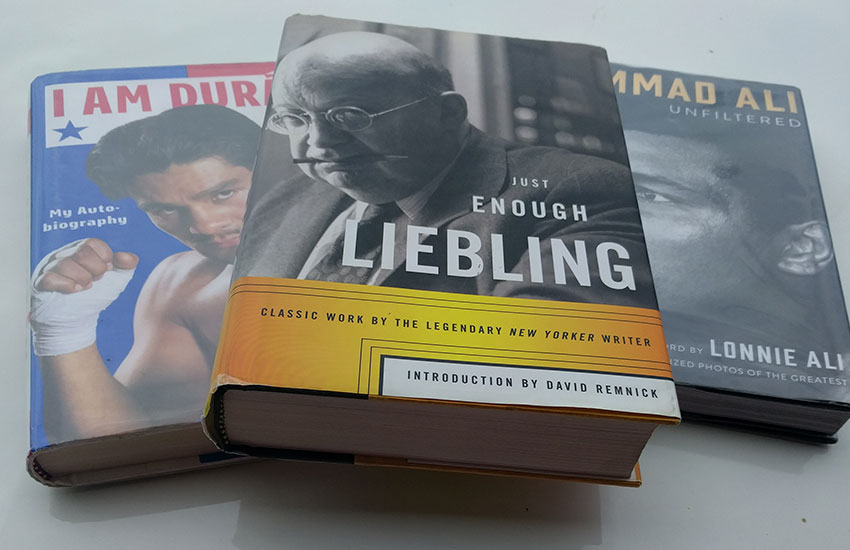
I recently asked a number of sage boxing people the following: “If you had to select ONE boxing book as your favorite, what would it be?” Some chose more than one.
Though not particularly sage myself, I’ll start it off with Ralph Wiley’s “Serenity: A Boxing Memoir.” I also enjoyed Mike Silver’s “The Arc of Boxing: The Rise and Decline of the Sweet Science” for the primary reason that it stirred up a lot of much needed debate between Old School and New School.
Here are the responses of twenty-five boxing buffs. The respondents are listed in alphabetical order:
JIM AMATO (writer, historian): A.J. Liebling’s “The Sweet Science.”
RUSS ANBER (elite trainer, corner man, and TV personality): “Joe Louis -Black Hero in White America” by Chris Mead. I remember reading this from cover to cover, unable to put it down. Others: “The Greatest Fight of Our Generation” by Lewis A. Erenberg, “The Sixteenth Round” by Rubin “Hurricane” Carter, “Beyond Glory” by David Margolick.
JOE BRUNO (former New York Tribune sportswriter; author of more than 45 crime-related books, including true crime, novels and screenplays): AJ Liebling’s “The Sweet Science.”
TRACY CALLIS (eminent boxing historian, writer, and journalist): Seven come quickly to mind. I love to read about boxing so I like almost any book about the game.
“A Man among Men” by Kelly Richard Nicholson
“Chicago’s Greatest Sportsman” by Mark T. Dunn
“Hitters, Dancers and Ring Magicians” by Kelly Richard Nicholson
“In the Ring with Bob Fitzsimmons” by Adam Pollack
“In the Ring with James J. Jeffries” by Adam Pollack
“The Choynski Chronicles” by Chris LaForce
“Ultimate Tough Guy” by Jim Carney Jr.
STEVE CANTON (A member of the International Boxing Research Organization, Steve has been involved in every aspect of boxing for more than 52 years): There are so many excellent boxing books. “Only The Ring Was Square” by Teddy Brenner with Barney Nagler was outstanding. “Bummy Davis vs. Murder Inc.” by Ron Ross, “Boxing Babylon” by Nigel Collins, just to name a few.
WILLIAM DETLOFF (former amateur boxer, author, editor of Ringside Seat magazine): I’ll go with Liebling’s “The Sweet Science.” Wiley’s anthology is certainly up there. It’s underrated.
JILL DIAMOND (boxing writer, official, and matchmaker): BOX: “The Face of Boxing” by Holgar Keifel because I love a good photography book. “Four Kings” by George Kimball. In fiction, “The Harder They Fall” by Budd Schulberg. There are so many others.
BERNARD FERNANDEZ (boxing writer and lifetime member of the BWAA): It’s a tough call. There are a lot of good ones floating around, but I’ll go with John Schulian’s “Writers’ Fighters and Other Sweet Scientists.” But then I’m kind of biased as John, a colleague of mine for a time at the Philadelphia Daily News, is a friend.
IVAN GOLDMAN (ex-Washington Post and LA Times newspaperman, boxing writer, novelist): I humbly submit my novel “The Barfighter” for consideration.
Dr. MARGARET GOODMAN (President of VADA, former Nevada boxing official, neurologist, author): Actually my novel “Death in Vegas” is my favorite book as it tells the truth about the sport via thinly-veiled fiction. Writing it was very cathartic.
LEE GROVES (boxing writer, author): If I had to pick one, it would be “McIlvanney on Boxing” by Hugh McIlvanney. Anytime I want to get a booster shot of excellent, muscular prose, that’s what I read. The two A.J. Liebling books “The Sweet Science” and “The Neutral Corner” also provide inspiration.
KEVIN IOLE (Yahoo boxing and MMA writer): I loved “The Fight” by Norman Mailer, which I found to be a well-reported, gripping tale of one of the seminal events of my youth. I also loved “Muhammad Ali: His Life and Times” by Thomas Hauser and “Fight of the Century” by Michael Arkush.
MIGUEL ITURRATE (TSS writer and Senior Archivist at The Boxing Channel): I really enjoy the history books, especially biographies. Battling Nelson’s autobiography is a good one. I also really enjoyed “Muldoon: The Solid Man of Sport” by Edward Van Every.
Dr. STUART KIRSCHENBAUM (former amateur boxer; co-founder National Association of Boxing Commissioners): “Empire of Deceit” by Dean Allison. It’s a fascinating true story of the Wells Fargo Bank embezzlement by boxing promoter Harold Smith. I had dealings with him while I was the head of the boxing commission in Michigan. He promoted several Kronk championship fights. Cast of characters include Muhammad Ali, Thomas Hearns, and a who’s who of that era. Only in America and only in boxing… crime does pay.
HAROLD LEDERMAN (famous boxing judge, member of HBO team, and 2016 IBHOF inductee): “All Time Greats Of Boxing” by Peter Arnold is my favorite boxing book because it’s a great book.
FRANK LOTIERZO: (TSS writer and lead analyst for The Boxing Channel): I can’t pick a favorite….so I’ll give you a few of my favorites that I’ve read this summer. “In This Corner” by Peter Heller which I read for the third time; “Sugar Ray Robinson” with Dave Anderson, “Joe Louis: The Great Black Hope” by Richard Bak, “Hard Luck: The Triumph and Tragedy of Jerry Quarry” by Steve Springer and Blake Chavez
ARNE LANG (historian, author, editor-in-chief of The Sweet Science): Many years ago I stumbled on a book called “Bella of Blackfriars” in a used book store in Carlsbad, California. Bella was Bella Burge, the widow of Dick Burge, an English middleweight champion who went to prison for eight years in a massive bank fraud. From her husband’s death in 1918 until 1940, Bella ran “The Ring,” a boxing house in a circular building on Blackfriars Road in London that was originally an Anglican chapel. I would liken “The Ring” to the Olympic Auditorium in LA. It didn’t get the biggest fights but housed many important fights and attracted a loyal clientele that included some salty characters. I found the book a great window into the world of boxing in London. By the way, The Ring had fallen on hard times when it was reduced to rubble by the German Luftwaffe in 1940. I never tire of reading A.J. Liebling, whether he’s writing about boxing or Louisiana politics or whatever. I read Liebling for pleasure and also in hopes that some of his skill as a wordsmith will rub off on me but it never has.
RON LIPTON (world class referee): I enjoyed “Jersey Boy: The Life and Mob Slaying of Frankie DePaula” and “Dick Tiger: The Life and Times of a Boxing Immortal,” both by Adeyinka Makinde, and the Rocky Graziano biography “Somebody Up There Likes Me.” Also, anything by Ted Sares, Springs Toledo, Mike Silver, and William Detloff.
GORDON MARINO (philosophy professor, Wall Street Journal boxing writer, trainer): I guess I would go with Carlo Rotella’s “Cut Time” and Roger Kahn’s “A Flame of Pure Fire: Jack Dempsey and the Roaring 20’s.”
ROBERT MLADINICH (former NYPD police detective, author, boxing writer): “Writers, Fighters and Other Sweet Scientists” by John Schulian. It is a collection of his columns from the Chicago Sun-Times and there is not a weak story in the batch. He is a master storyteller and my favorite boxing writer. I also immensely enjoyed “Beyond Glory: Joe Louis vs. Max Scheming and a World on the Brink” by David Margolick for its historical and social significance and the underrated but exceptional “Weigh-In: The Selling of a Middleweight” by title challenger Fraser Scott.
JOHN SCULLY (elite trainer, former world title challenger): My favorite boxing book is one that I believe to be one of the greatest books ever written on the inside of boxing called “The Black Lights” by Thomas Hauser. It was actually sent to me by Mike Jones back in 1988 when he was trying to sign me to a professional contract. He sent me the book I assumed as a way to show me how he deals in the boxing game as it is centered around his fighter, Billy Costello. It is a truly great book.
MIKE SILVER (boxing historian; author): I could easily name at least a dozen truly outstanding boxing books that are my favorites, but if asked to name just one I would place David Margolick’s “Beyond Glory Joe Louis vs. Max Schmeling and a World on the Brink” in the top spot. Another all-time favorite is the great Nat Fleischer’s “50 Years at Ringside.”
CARYN A. TATE (boxing writer) While it encompasses more than boxing, Bruce Lee’s “Tao of Jeet Kune Do” is probably my favorite book on combat. The book is filled with priceless instruction that is relevant and insightful. Lee was a great admirer of many Western boxers and incorporated some of their techniques into the martial art he founded. More than just an instruction manual, the book fuses technique with philosophy and real world psychology. The book shows that Lee was on the same page with great minds in boxing like Emanuel Steward and Cus D’Amato.
BRUCE TRAMPLER (Top Rank matchmaker; a member of the International Boxing Hall of Fame): Off the top of my head, “The Professional” by W.C. Heinz, “Fat City” by Leonard Gardner, “A Boxing Companion” by Richard O’Brien, “Only The Ring Was Square,” and “James Norris and the Decline of Boxing” by Barney Nagler.
GARY “DIGITAL” WILLIAMS: (boxing writer, blogger and “Master of the Beltway”): I have two. Jack Newfield’s “Only in America: The Life and Crimes of Don King” is one of the great investigative books of all time. It was riveting. Also, Brad Berkwitt’s “Boxing Interviews of a Lifetime.” I love the range of people — in and out of the sport — that he interviews in the book.
PETER WOOD: (former boxer, author): My favorite iconic boxing books are “The Sweet Science” by A.J. Liebling and “The Harder They Fall” by Budd Schulberg.
My favorite non-fiction boxing books are “Weigh-In” by Fraser Scott; “In This Corner” by Peter Heller, “Atlas” by Teddy Atlas , and “The Raging Bull” by Joseph Carter and Peter Savage.
My favorite fictional boxing books are “My Father’s Fighter” by Ronald K. Fried and “The Professional” by W.C. Heinz.
Special Mention goes to “Flash Gordon’s 1970 East Coast Boxing Yearbook” with Johnny Bos and Bruce Trampler. My all-time favorite boxing autobiography is “Confessions of a Fighter” by Peter W. Wood.
Observations: “The Sweet Science” by A.J. Liebling seemed to get a lot of attention. No surprise there. That said, I think we now have a pretty comprehensive list from which we can select some compelling stuff for our reading enjoyment.
Thanks to all.
Ted Sares, a member of Ring 4’s Hall of Fame, is one of the world’s oldest active power lifters and holds several records in the Grand Master class. He has won the EPF Nationals four years in a row.
Check out more boxing news on video at The Boxing Channel.
Featured Articles
Thomas Hauser’s Literary Notes: Johnny Greaves Tells a Sad Tale
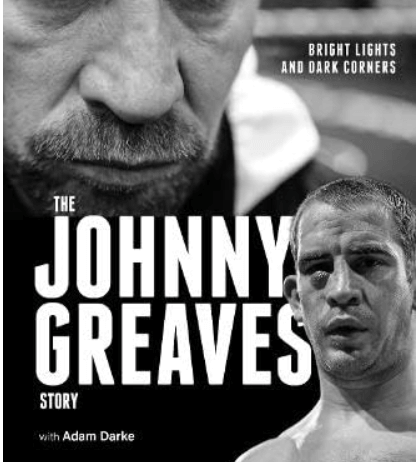
Johnny Greaves was a professional loser. He had one hundred professional fights between 2007 and 2013, lost 96 of them, scored one knockout, and was stopped short of the distance twelve times. There was no subtlety in how his role was explained to him: “Look, Johnny; professional boxing works two ways. You’re either a ticket-seller and make money for the promoter, in which case you get to win fights. If you don’t sell tickets but can look after yourself a bit, you become an opponent and you fight to lose.”
By losing, he could make upwards of one thousand pounds for a night‘s work.
Greaves grew up with an alcoholic father who beat his children and wife. Johnny learned how to survive the beatings, which is what his career as a fighter would become. He was a scared, angry, often violent child who was expelled from school and found solace in alcohol and drugs.
The fighters Greaves lost to in the pros ran the gamut from inept local favorites to future champions Liam Walsh, Anthony Crolla, Lee Selby, Gavin Rees, and Jack Catterall. Alcohol and drugs remained constants in his life. He fought after drinking, smoking weed, and snorting cocaine on the night before – and sometimes on the day of – a fight. On multiple occasions, he came close to committing suicide. His goal in boxing ultimately became to have one hundred professional fights.
On rare occasions, two professional losers – “journeymen,” they’re called in The UK – are matched against each other. That was how Greaves got three of the four wins on his ledger. On September 29, 2013, he fought the one hundredth and final fight of his career against Dan Carr in London’s famed York Hall. Carr had a 2-42-2 ring record and would finish his career with three wins in ninety outings. Greaves-Carr was a fight that Johnny could win. He emerged triumphant on a four-round decision.
The Johnny Greaves Story, told by Greaves with the help of Adam Darke (Pitch Publishing) tells the whole sordid tale. Some of Greaves’s thoughts follow:
* “We all knew why we were there, and it wasn’t to win. The home fighters were the guys who had sold all the tickets and were deemed to have some talent. We were the scum. We knew our role. Give some young prospect a bit of a workout, keep out of the way of any big shots, lose on points but take home a wedge of cash, and fight again next week.”
* “If you fought too hard and won, then you wouldn’t get booked for any more shows. If you swung for the trees and got cut or knocked out, then you couldn’t fight for another 28 days. So what were you supposed to do? The answer was to LOOK like you were trying to win but be clever in the process. Slip and move, feint, throw little shots that were rangefinders, hold on, waste time. There was an art to this game, and I was quickly learning what a cynical business it was.”
* “The unknown for the journeyman was always how good your opponent might be. He could be a future world champion. Or he might be some hyped-up nightclub bouncer with a big following who was making lots of money for the promoter.”
* “No matter how well I fought, I wasn’t going to be getting any decisions. These fights weren’t scored fairly. The referees and judges understood who the paymasters were and they played the game. What was the point of having a go and being the best version of you if nobody was going to recognize or reward it?”
* “When I first stepped into the professional arena, I believed I was tough. believed that nobody could stop me. But fight by fight, those ideas were being challenged and broken down. Once you know that you can be hurt, dropped and knocked out, you’re never quite the same fighter.”
* “I had started off with a dream, an idea of what boxing was and what it would do for me. It was going to be a place where I could prove my toughness. A place that I could escape to and be someone else for a while. For a while, boxing was that place. But it wore me down to the point that I stopped caring. I’d grown sick and tired of it all. I wished that I could feel pride at what I’d achieved. But most of the time, I just felt like a loser.”
* “The fights were getting much more difficult, the damage to my body and my psyche taking longer and longer to repair after each defeat. I was putting myself in more and more danger with each passing fight. I was getting hurt more often and stopped more regularly. Even with the 28-day [suspensions], I didn’t have time to heal. I was staggering from one fight to the next and picking up more injuries along the way.”
* “I was losing my toughness and resilience. When that’s all you’ve ever had, it’s a hard thing to accept. Drink and drugs had always been present in my life. But now they became a regular part of my pre-fight preparation. It helped to shut out the fear and quieted the thoughts and worries that I shouldn’t be doing this anymore.”
* “My body was broken. My hands were constantly sore with blisters and cuts. I had early arthritis in my hip and my teeth were a mess. I looked an absolute state and inside I felt worse. But I couldn’t stop fighting yet. Not before the 100.”
* “I had abused myself time after time and stood in front of better men, taking a beating when I could have been sensible and covered up. At the start, I was rarely dropped or stopped. Now it was becoming a regular part of the game. Most of the guys I was facing were a lot better than me. This was mainly about survival.”
* “Was my brain f***ed from taking too many punches? I knew it was, to be honest. I could feel my speech changing and memory going. I was mentally unwell and shouldn’t have been fighting but the promoters didn’t care. Johnny Greaves was still a good booking. Maybe an even better one now that he might get knocked out.”
* “Nobody gave a f*** about me and whether I lived or died. I didn’t care about that much either. But the thought of being humiliated, knocked out in front of all those people; that was worse than the thought of dying. The idea of being exposed for what I was – a nobody.”
* “I was a miserable bastard in real life. A depressive downbeat mouthy little f***er. Everything I’ve done has been to mask the feeling that I’m worthless. That I have no value. The drinks and the drugs just helped me to forget that for a while. I still frighten myself a lot. My thoughts scare me. Do I really want to be here for the next thirty or forty years? I don’t know. If suicide wasn’t so impactful on people around you, I would have taken that leap. I don’t enjoy life and never have.”
So . . . Any questions?
****
Steve Albert was Showtime’s blow-by-blow commentator for two decades. But his reach extended far beyond boxing.
Albert’s sojourn through professional sports began in high school when he was a ball boy for the New York Knicks. Over the years, he was behind the microphone for more than a dozen teams in eleven leagues including four NBA franchises.
Putting the length of that trajectory in perspective . . . As a ballboy, Steve handed bottles of water and towels to a Knicks back-up forward named Phil Jackson. Later, they worked together as commentators for the New Jersey Nets. Then Steve provided the soundtrack for some of Jackson’s triumphs when he won eleven NBA championships as head coach of the Chicago Bulls and Los Angeles Lakers.
It’s also a matter of record that Steve’s oldest brother, Marv, was arguably the greatest play-by-play announcer in NBA history. And brother Al enjoyed a successful career behind the microphone after playing professional hockey.
Now Steve has written a memoir titled A Funny Thing Happened on the Way to the Broadcast Booth. Those who know him know that Steve doesn’t like to say bad things about people. And he doesn’t here. Nor does he delve into the inner workings of sports media or the sports dream machine. The book is largely a collection of lighthearted personal recollections, although there are times when the gravity of boxing forces reflection.
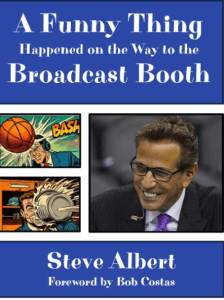
“Fighters were unlike any other professional athletes I had ever encountered,” Albert writes. “Many were products of incomprehensible backgrounds, fiercely tough neighborhoods, ghettos and, in some cases, jungles. Some got into the sport because they were bullied as children. For others, boxing was a means of survival. In many cases, it was an escape from a way of life that most people couldn’t even fathom.”
At one point, Steve recounts a ringside ritual that he followed when he was behind the microphone for Showtime Boxing: “I would precisely line up my trio of beverages – coffee, water, soda – on the far edge of the table closest to the ring apron. Perhaps the best advice I ever received from Ferdie [broadcast partner Ferdie Pacheco] was early on in my blow-by-blow career – ‘Always cover your coffee at ringside with an index card unless you like your coffee with cream, sugar, and blood.’”
Writing about the prelude to the infamous Holyfield-Tyson “bite fight,” Albert recalls, “I remember thinking that Tyson was going to do something unusual that night. I had this sinking feeling in my gut that he was going to pull something exceedingly out of the ordinary. His grousing about Holyfield’s head butts in the first fight added to my concern. [But] nobody could have foreseen what actually happened. Had I opened that broadcast with, ‘Folks, tonight I predict that Mike Tyson will bite off a chunk of Evander Holyfield’s ear,’ some fellas in white coats might have approached me and said, ‘Uh, Steve, could you come with us.'”
And then there’s my favorite line in the book: “I once asked a fighter if he was happily married,” Albert recounts. “He said, ‘Yes, but my wife’s not.'”
“All I ever wanted was to be a sportscaster,” Albert says in closing. “I didn’t always get it right, but I tried to do my job with honesty and integrity. For forty-five years, calling games was my life. I think it all worked out.”
Thomas Hauser’s email address is thomashauserwriter@gmail.com. His next book – The Most Honest Sport: Two More Years Inside Boxing – will be published this month and is available for preorder at:
https://www.amazon.com/Most-Honest-Sport-Inside-Boxing/dp/1955836329
In 2019, Hauser was selected for boxing’s highest honor – induction into the International Boxing Hall of Fame.
To comment on this story in the Fight Forum CLICK HERE
Featured Articles
Argentina’s Fernando Martinez Wins His Rematch with Kazuto Ioka
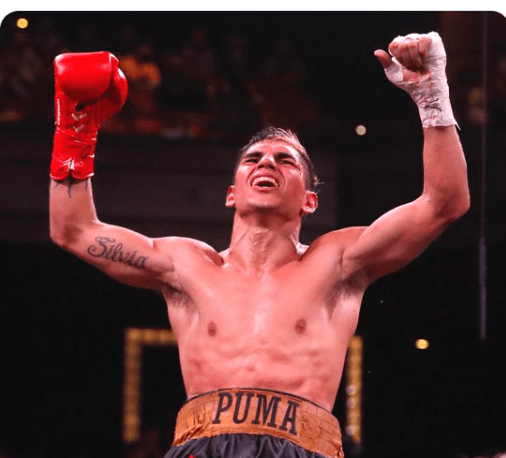
In an excellent fight climaxed by a furious 12th round, Argentina’s Fernando Daniel Martinez came off the deck to win his rematch with Kazuto Ioka and retain his piece of the world 115-pound title. The match was staged at Ioka’s familiar stomping grounds, the Ota-City General Gymnasium in Tokyo.
In their first meeting on July 7 of last year in Tokyo, Martinez was returned the winner on scores of 117-111, 116-112, and a bizarre 120-108. The rematch was slated for late December, but Martinez took ill a few hours before the weigh-in and the bout was postponed.
The 33-year-old Martinez, who came in sporting a 17-0 (9) record, was a 7-2 favorite to win the sequel, but there were plenty of reasons to favor Ioka, 36, aside from his home field advantage. The first Japanese male fighter to win world titles in four weight classes, Ioka was 3-0 in rematches and his long-time trainer Ismael Salas was on a nice roll. Salas was 2-0 last weekend in Times Square, having handled upset-maker Rolly Romero and Reito Tsutsumi who was making his pro debut.
But the fourth time was not a charm for Ioka (31-4-1) who seemingly pulled the fight out of the fire in round 10 when he pitched the Argentine to the canvas with a pair of left hooks, but then wasn’t able to capitalize on the momentum swing.
Martinez set a fast pace and had Ioka fighting off his back foot for much of the fight. Beginning in round seven, Martinez looked fatigued, but the Argentine was conserving his energy for the championship rounds. In the end, he won the bout on all three cards: 114-113, 116-112, 117-110.
Up next for Fernando Martinez may be a date with fellow unbeaten Jesse “Bam” Rodriguez, the lineal champion at 115. San Antonio’s Rodriguez is a huge favorite to keep his title when he defends against South Africa’s obscure Phumelela Cafu on July 19 in Frisco, Texas.
As for Ioka, had he won today’s rematch, that may have gotten him over the hump in so far as making it into the International Boxing Hall of Fame. True, winning titles in four weight classes is no great shakes when the bookends are only 10 pounds apart, but Ioka is still a worthy candidate.
To comment on this story in the Fight Forum CLICK HERE
Featured Articles
Emanuel Navarrete Survives a Bloody Battle with Charly Suarez in San Diego
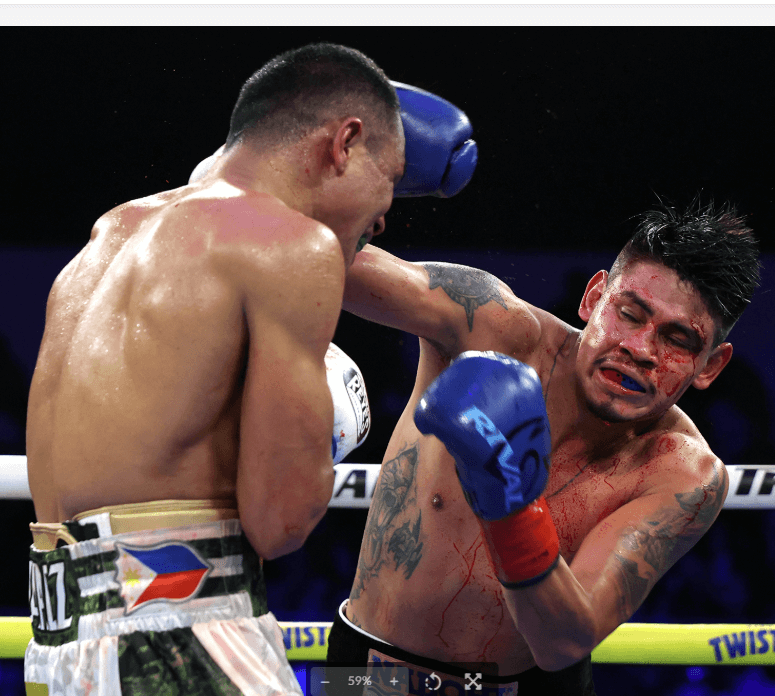
In a torrid battle Mexico’s Emanuel “Vaquero” Navarrete and his staccato attack staved off the herky-jerky non-stop assaults of Philippine’s Charly Suarez to win by technical decision and retain the WBO super feather world title on Saturday.
What do they feed these guys?
Navarrete (40-2-1, 32 KOs) and his elongated arms managed to connect enough to compensate against the surprising Suarez (18-1, 10 KOs) who wowed the crowd at Pechanga Arena in San Diego.
An accidental clash of heads opened a cut on the side of Navarrete’s left eye and forced a stoppage midway through the fight.
From the opening round Navarrete used his windmill style of attack with punches from different angles that caught Suarez multiple times early. It did not matter. Suarez fired back with impunity and was just as hungry to punch it out with the Mexican fighter.
It was savage.
Every time Navarrete connected solidly, he seemed to pause and check out the damage. Bad idea. Suarez would immediately counter with bombs of his own and surprise the champion with his resilience and tenacity.
Wherever they found Suarez they should look for more, because the Filipino fighter from Manila was ferocious and never out of his depth.
Around the sixth round the Mexican fighter seemed a little drained and puzzled at the tireless attacks coming from Suarez. During an exchange of blows a cut opened up on Navarrete and it was ruled an accidental clash of heads by the referee. Blood streamed down the side of Navarrete’s face and it was cleared by the ringside physician.
But at the opening of the eighth round, the fight was stopped and the ringside physician ruled the cut was too bad to continue. The California State Athletic Commission looked at tape of the round when the cut opened to decipher if it was an accidental butt or a punch that caused the cut. It was unclear so the referee’s call of accidental clash of heads stood as the final ruling.
Score cards from the judges saw Navarrete the winner by scores of 78-75, 77-76 twice. He retains the WBO title.
Interim IBF Lightweight Title
The sharp-shooting Raymond “Danger” Muratalla (23-0, 17 KOs) maneuvered past Russia’s Zaur Abdullaev (20-2, 12 KOs) by unanimous decision to win the interim IBF lightweight title after 12 rounds.
Both fighters were strategic in their approach with Muratalla switching from orthodox to southpaw at various times of the fight. Neither fighter was ever able to dominant any round.
Defense proved the difference between the two lightweights. Muratalla was able to slip more blows than Abdullaev and that proved the difference. The fighter from Fontana, California was able to pierce Abdullaev’s guard more often than not, especially with counter punches.
Abdullaev was never out of the fight. The Russian fighter was able to change tactics and counter the counters midway through the fight. It proved effective especially to the body. But it was not enough to offset Muratalla’s accuracy.
There were no knockdowns and after 12 rounds the judges scored it 118-110, 119-109 twice for Muratalla who now becomes the mandatory for the IBF lightweight title should Vasyl Lomachenko return to defend it.
Muratalla was brief.
“He was a tough fighter,” said Muratalla. “My defense is something I work on a lot.”
Perla Wins
Super flyweight Perla Bazaldua (2-0) eased past Mona Ward (0-2) with a polished display of fighting at length and inside.
Combination punching and defense allowed Bazaldua to punch in-between Ward’s attacks and force the St. Louis fighter to clinch repeatedly. But Ward hung in there despite taking a lot of blows. After four rounds the Los Angeles-based Bazaldua was scored the winner 40-36 on all three cards. Bazaldua signed a long term contract with Top Rank in March.
Photo credit: Mikey Williams / Top Rank
To comment on this story in the Fight Forum CLICK HERE
-
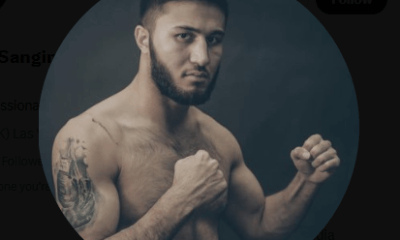
 Featured Articles4 weeks ago
Featured Articles4 weeks agoMekhrubon Sanginov, whose Heroism Nearly Proved Fatal, Returns on Saturday
-
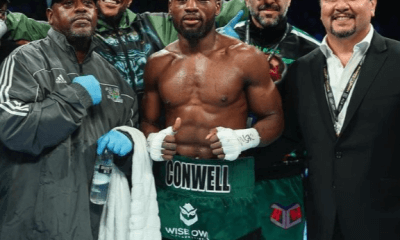
 Featured Articles3 weeks ago
Featured Articles3 weeks agoAvila Perspective, Chap. 322: Super Welterweight Week in SoCal
-

 Featured Articles4 weeks ago
Featured Articles4 weeks agoTSS Salutes Thomas Hauser and his Bernie Award Cohorts
-
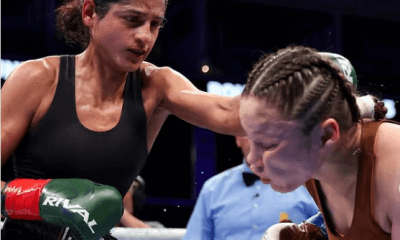
 Featured Articles3 weeks ago
Featured Articles3 weeks agoGabriela Fundora KOs Marilyn Badillo and Perez Upsets Conwell in Oceanside
-
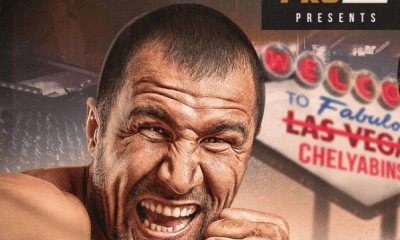
 Featured Articles3 weeks ago
Featured Articles3 weeks ago‘Krusher’ Kovalev Exits on a Winning Note: TKOs Artur Mann in his ‘Farewell Fight’
-

 Featured Articles3 weeks ago
Featured Articles3 weeks agoFloyd Mayweather has Another Phenom and his name is Curmel Moton
-
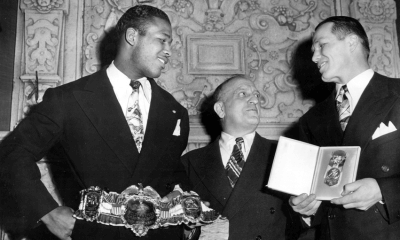
 Featured Articles3 weeks ago
Featured Articles3 weeks agoArne’s Almanac: The First Boxing Writers Assoc. of America Dinner Was Quite the Shindig
-
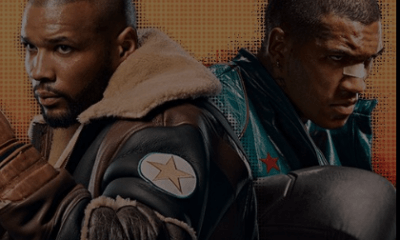
 Featured Articles3 weeks ago
Featured Articles3 weeks agoAvila Perspective, Chap. 323: Benn vs Eubank Family Feud and More















